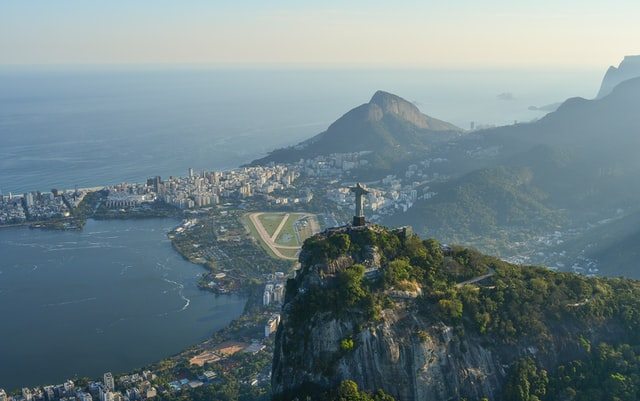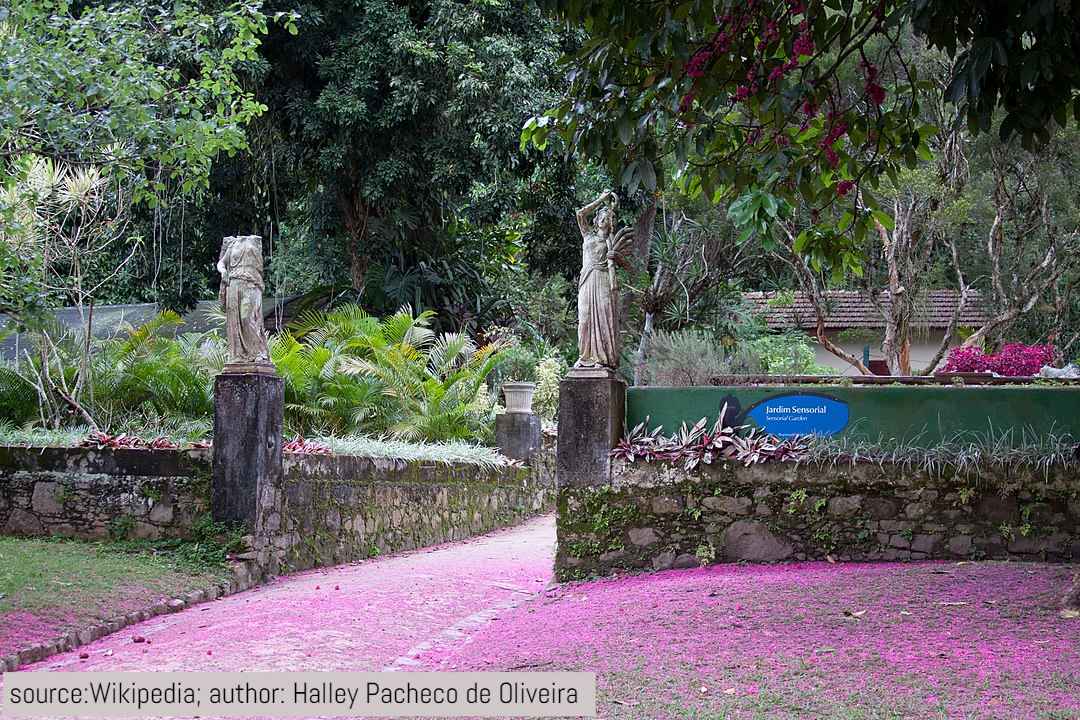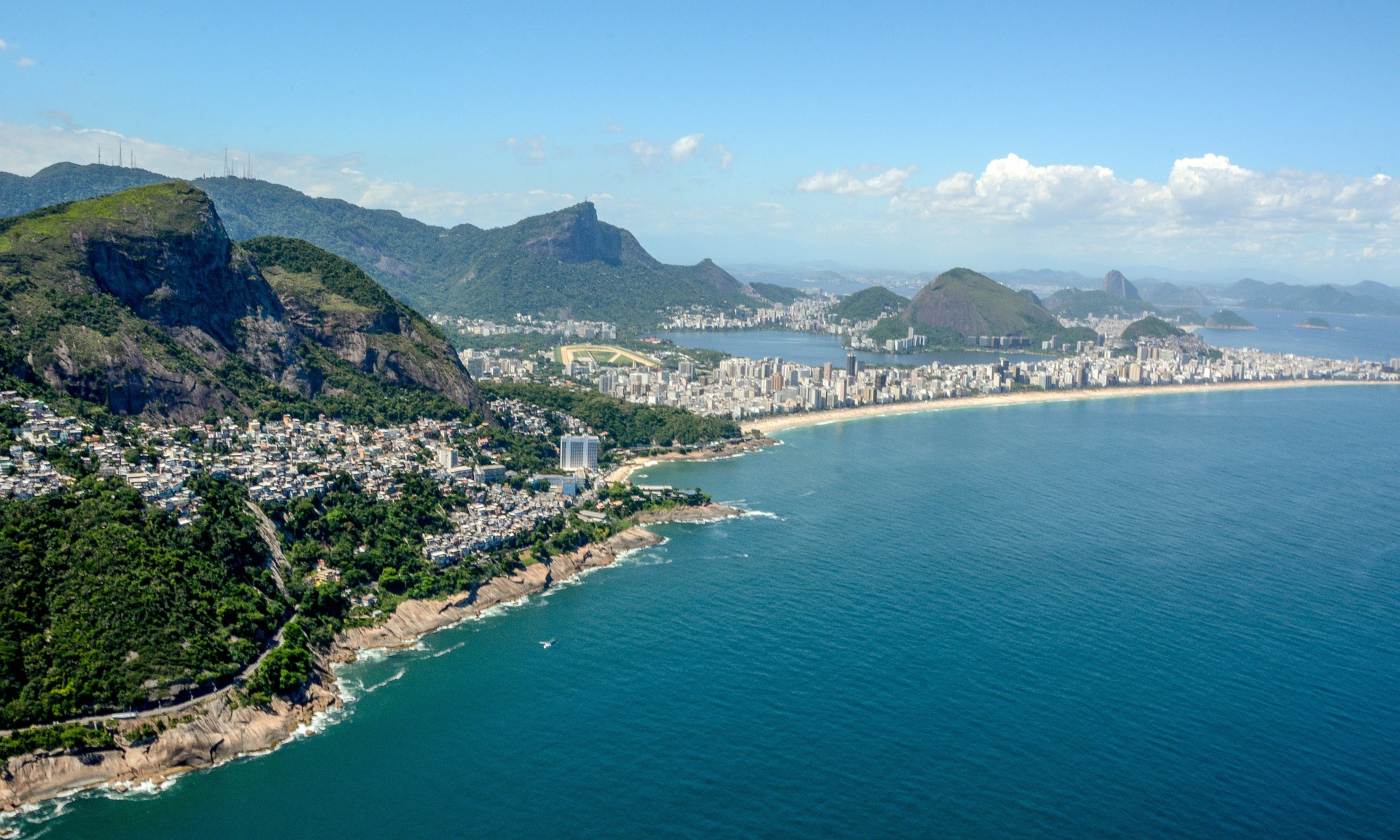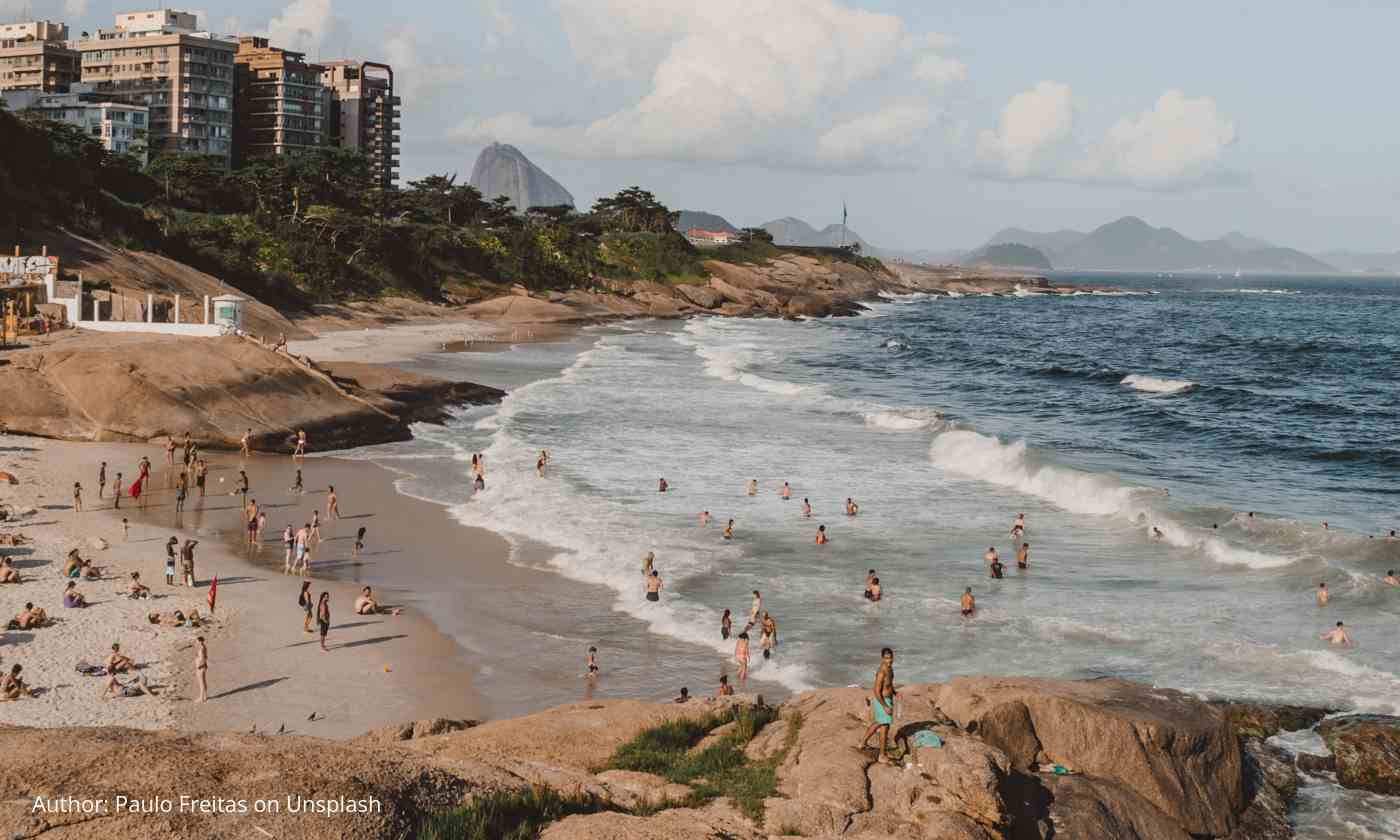The most important information about Rio de Janeiro
- History of Rio de Janeiro - The first people to rule Rio were the Portuguese when they landed on the soil of Guanabara Bay on the 1st January 1502. The city was founded in 1565 and the name of the city means River of January. Rio de Janeiro became the capital of the State of Brazil in 1763, and it was the capital of the Empire of Brazil until 1889. It was also the capital of a republican Brazil until 1960, when the capital was transferred to Brasília. Rio de Janeiro was the first South American city to host the Olympic Games. It hosted both the 2016 Olympic Games and the 2016 Paralympic Games.
- Geography and time zone - Rio de Janeiro is located on the western part of a strip of Brazil’s Atlantic coast and it faces largely south. The center of the city lies on the plains of the western shore of Guanabara Bay. In the North Zone, there are plains composed of marine and continental sediments and hills and several rocky mountains. The South Zone extends to the beaches of the open sea and it is cut off from the center and from the North Zone by coastal mountains. The West Zone was cut off by the mountainous terrain but is not more easily accessible from the South Zone by new roads and tunnels that were built by the end of the 20th century. Time zone is Brasilia Standard Time, GMT -3.
- Climate - Rio de Janeiro has a tropical savanna climate that closely borders a tropical monsoon climate. There are long periods of heavy rain between December and March and it has hot, humid summers and warm, sunny winters.
- Demography - Rio de Janeiro has a population of 6.748 million. Over half of them are White people, over 30% are Pardo, or multiracial, over 11% are Black, while less than 1% are Asian and Amerindian. It is the second-most populous city in Brazil and the sixth-most populous in the Americas, and it is home to the largest Portuguese population outside of Lisbon in Portugal. When it comes to religion, it is diverse, but Catholic Christianity is the most common.
- Tradition and culture - What is this city unique for? - Rio de Janeiro is one of the most visited cities in South America. It is most known for Carnival, samba, bossa nova, and balneário beaches such as Barra de Tijuca, Copacabana, Ipanema, and Leblon. It is also unique for its location, architecture, inhabitants, and lifestyle. Rio is home to the biggest urban forest in the world and the iconic Christ statue atop a Mountain, Christ the Redeemer.
City Travel Tips for Rio de Janeiro
- Official Language and other languages spoken - The official and national language of Brazil is Portuguese. Over 97% of people speak it. The second most used language is German, with less than 2% of speakers. Less than 1% speak Indigenous languages.
- Entering the city: Procedures and requirements - There are no special procedures and requirements when entering Rio de Janeiro, but when entering Brazil, you need a valid passport on the date of entry with one blank page for an entry stamp. You don’t need a tourist visa and more than 10.000 BR must be declared to Customs.
- Money Tips - Currency - The currency that is used in Brazil is the Real. You can save money by eating at the restaurants that have you pay by the kilo, and if you’re staying at a hostel with kitchen facilities, you should get the food at the market and eat like the locals. Take advantage of the free days that almost all of the museums in Rio have each week, and take a free walking tour like Free Walker Tours, Rio By Foot, and Strawberry Tours. If you want to save a lot of money, you should avoid Carnival time since the prices skyrocket at that time. The average price of a 7-day trip to Rio de Janeiro is around 1570 euros for a solo traveler.
- Country Dialing Code Prefix - The dialing code prefix for Brazil is +55.
- SAMU (Ambulance Service): 192.
- Fire Department: 193.
- Military Police: 190.
- Federal Police: 194.
- Civil Defence: 199.
- Dial Health: 136.
- Rio de Janeiro City Government: 1746.
- State Public Health bureau: 0800-0255525.
- Moovit - an app that shows you the way to get to any place with public transit. You can also check bus arrival times, maps, service alerts and train schedules for the city.
- Na Praia App - an app through which you can order everything at the beach, from a lounge chair to a cocktail.
- Best of Rio de Janeiro app - an app that suggests bars, restaurants, entertainment, coffee shops, hotels, hostels and more based on online customers' opinions.
- Airbnb - an app where you can rent out places from local hosts.
- EasyTaxi - an app that allows you to request a taxi with just the click of a button.
When to visit Rio de Janeiro?
How to get to Rio de Janeiro?
- Plane - Rio has two airports - Rio de Janeiro-Galeao Airport and Santos Dumont Airport.
- Train - the main train station in Rio is Central do Brasil and it is the last stop of Rio’s railway network.
- Bus - the main bus station in Rio is Novo Rio Bus Station.
- Car - the main highways that go to Rio are 101, 465 and RJ-083.
Activities for tourists in Rio de Janeiro
- Full Day in Rio: Christ the Redeemer, Sugarloaf, Maracana and Selaron with Lunch - a full day tour of Rio de Janeiro with a hotel pickup and a guide. The tour includes a Brazilian-style lunch. You can hear this tour in Portuguese, English and Spanish. The price is 410 R$ per person (65 euros) and you can reserve it on the C2Rio Travel website.
- Hang gliding Experience Rotorfly - enjoy flying and seeing Rio from up above. You will fly with an instructor that speaks Portuguese, English, French or Spanish. The price is 97.21 euros per adult. The company that provides this experience is Rotorfly Voo Livre.
- 3 Hour Sailing Experience in Rio - this tour allows you to enjoy Rio from the water in the protected bay or open ocean waters. The Captain will tell you all about the history of Rio while you enjoy your welcome drinks and snacks. The price is 35.25 euros per adult, and you can book it on the Sail in Rio website.
- In downtown there is a market called SAARA where you can find everything you can think of - clothes, sporting goods, party supplies, accessories, shoes, swimwear, souvenirs and more. Two streets that you should visit there are Rua Senhor dos Passos and Rua da Alfândega.
- On the first Saturday of the month there is a fair in Lapa called the fair of Rua do Lavradio where you can find handicrafts, antiques, second-hand stores and many other articles. Antiques fair at praça XV is a famous flea market where you can find rare items like typewriters, antique cameras, vintage items, pottery, coins, art, and much more.
- Good Friday - the most crucial date in the Catholic calendar that Rio marks with religious processions, ceremonies, and masses. It is held in Catedral Metropolitana and throughout the city.
- Dia do Índio - Indian Day, the annual Day of the Indian on 19 April in honour of the Indigenous peoples on which there are events at the Museu do Índio like ceremonial dances, live music performances, exhibitions and film screenings.
- Festas Junina - it is held from 1 June to 30 June when stalls are set out in private homes, in clubs, and in public places all over Rio to resemble village market places and are decorated with streamers and lanterns. People dance, eat and drink, and there are mock weddings where couples follow the old leaping the flames.
- Reveillon - on 31 December there are outdoor concerts and parties all over Rio that culminate in a massive fireworks display on Copacabana Beach.
- Rio de Janeiro Carnival - one of the wildest extravaganzas on the planet. It starts on Saturday and ends on Ash Wednesday. Samba schools from each city neighborhood compete in parading with the best, loudest and most creatively decorated floats that carry samba bands and are accompanied by dancers and other performers.
Tourist attractions in Rio de Janeiro?
- Christ the Redeemer - an Art Deco statue of Jesus Christ that was constructed between 1922 and 1931. It is 30 metres high with an 8-metre pedestal, while the arms stretch 28 metres wide. The statue is located at the peak of the 700-metre Corcovado mountain in the Tijuca National Park. It overlooks the city of Rio de Janeiro. You can visit it every day from 8 am to 7 pm, and the ticket is around 8,73 euros.
- Sugarloaf Mountain - a peak at the mouth of Guanabara Bay that rises 396 above the harbor. It got its name because it resembles the traditional shape of concentrated refined loaf sugar. It has a glass-walled cable car and panoramic views of the city and beyond.
- Copacabana Beach - the most famous beach in Rio that stretches 4 km and has fine sand. There you can find beach vendors that walk up and down in the heat, people sunbathing, drinking coconuts or playing football and volleyball. It is also the place where there is a massive firework show for the New Year.
- Ipanema Beach - another white-sand beach. There are two mountains at the western end of the beach called Dois Irmãos. On the beach you can drink, play football, volleyball and footvolley.
- Museu do Amanhã - a science museum in a futuristic structure whose name translates to Museum of Tomorrow. The main exhibition has five main areas: Cosmos, Earth, Anthropocene, Tomorrow, and Us. It was opened on December 17, 2015. Museum is open from Tuesdays to Sundays from 10 am to 6 pm, and the tickets are 30 R$ (4,80 euros).
- Tijuca National Park - an urban national park in the mountains. There are numerous hiking trails that you can take and the typical destinations are: Diamantina’s waterfall, Parrot’s Beak (Bico do Papagaio), Tijuca’s Peak (Pico da Tijuca), Cave Circuit (Circuito das Grutas), Archer’s Hill (Morro do Archer), Anhanguera’s Hill (Morro da Anhanguera), the Excelsior Lookout (Mirante do Excelsior) and the Bat’s Cave (Caverna dos Morcegos).
- Escadaria Selarón - Selaron Steps, a stairway covered with mosaic tile. They are the work of Chilean-born artist Jorge Selarón. There are 215 steps that are covered in over 2000 tiles collected from over 60 countries around the world.
- Maracanã - a stadium whose official name is Estádio Jornalista Mário Filho. It is part of a complex that includes an arena known as Maracanãzinho, “The Little Maracanã” and it was opened in 1950 to host the FIFA World Cup.
- Niterói Contemporary Art Museum - a museum completed in 1996 and designed by Oscar Niemeyer. It has a collection of 1217 works from the art collector João Sattamini. The Museum is open from Tuesday to Sunday from 10 am to 6 pm.
- Jardim Botânico do Rio de Janeiro - a botanical garden located at the Jardim Botânico district in the South Zone. There are around 6500 species on 54 hectares. There are historical, artistic, and archeological monuments within the garden. It was founded in 1808 by King John VI of Portugal. The garden is open from Tuesday to Sunday from 6 am to 6 pm and the ticket price is 60 R$ (9,60 euros).
Accommodation in Rio de Janeiro
- Hotels - Most hotels are located on the Copacabana and Ipanema beach fronts where the big luxury hotel chains dominate the coastal strip. Of course, as you move away from the beach, the prices go down. There are luxury hotels that have a cost over R$500 for a double room with breakfast, moderate ones that range from R$250 to R$500 for the same type of room, and cheap hotels that have a price up to R$250. Luxury ones are for example Copacabana Palace, Fasano Rio and Hotel Mama Ruisa. Moderate hotels are Rio Design Hotel, Ritz Plaza Hotel Leblon and Windsor Barra Hotel. The cheap ones are Regina and San Marco Hotel.
- Rooms and Apartments - There are plenty of apartments for daily rent in Rio. Prices go from 9 euros to 4419 euros for a place close to the beach. You can find apartments with free Wi-Fi, a kitchen and several rooms, depending on what you need.
- Hostels and budget accommodation - There is also an option of renting a room in a hostel. The prices go from 4 euros to 44 euros. There are different types of rooms: female only, male only and mixed dormitories, and rooms with up to 8 beds. Some of the hostels have breakfast included. You should check out Rio Hostel that has a tiny swimming pool.
Best restaurants in Rio de Janeiro
- Camarada Camarao - Nova America - here you can try Brazilian food, but also seafood and International cuisine. People are especially praising the food here, the atmosphere and the music.
- Adega Santiago Barra - in this restaurant, you can try European, Spanish, Portuguese and Catalan cuisine. They also offer a wide range of wines.
- Classico Beach Club Urca - they offer Brazilian, Contemporary and Healthy food. Here you can try fantastic beef pastels.
- Rio’s most famous nightlife hub is Lapa, a neighborhood in central Rio that hosts a huge street party every weekend. Lapa is full of bars, pubs, and nightclubs.
- Also, by the beaches Ipanema and Copacabana you can find a variety of restaurants and bars. In Centro you can find live bands every weekend.
Public transport in Rio de Janeiro
- Buses - The main form of transport in Rio is the bus. There are almost 440 municipal bus lines, but for tourists the most important lines are Troncal 1, that operates around Copacabana, Ipanema and up to Centro, Troncal 3, that operates between Leblon and Centro, and the 581, that goes from Copacabana to the Sugarloaf mountain. The ticket costs R$4,05 (0,65 euros). There is a modern type of bus - BRT that has an exclusive corridor. There are 3 BRT lines in Rio: Transoeste Line, Transcarioca Line, and Transolímpica Line. The ticket is also R$4,05.
- Tram and local trains - Rio has the oldest operating electric tramway in Brazil and South America - Santa Teresa Tram. There are modern trams known as VLTs. The ticket price is R$3,80 (0,61 euros). The train is known as the SuperVia and there are eight lines that lead out of Central Station. The ticket is R$4,60 (0,74 euros).
- Metro - The subway has three lines - the orange, the green, and the yellow. The yellow line goes from Ipanema to Metro Jardim Oceânico in Barra da Tijuca. The orange line goes from Ipanema to Metro Urugai in Tijuca. The green line goes from Metro Botafogo to Metro Pavuna in the North Zone of the city. The ticket is R$4,30 (0,69 euros).
- Cycling - Rio has over 90 miles of bicycle paths that are mainly along the beaches Copacabana, Ipanema, Flamengo, and Lelbon. A bicycle sharing system - Bike Rio, has 600 bicycles available at 60 rental stations located in 14 neighborhoods throughout the city.
- Taxi - Rio has various taxis. The cheapest are the yellow ones, while those of different colors participate in cooperatives and these have a fixed price. You should prefer taxis that use a taximeter and always refuse fixed costs.































